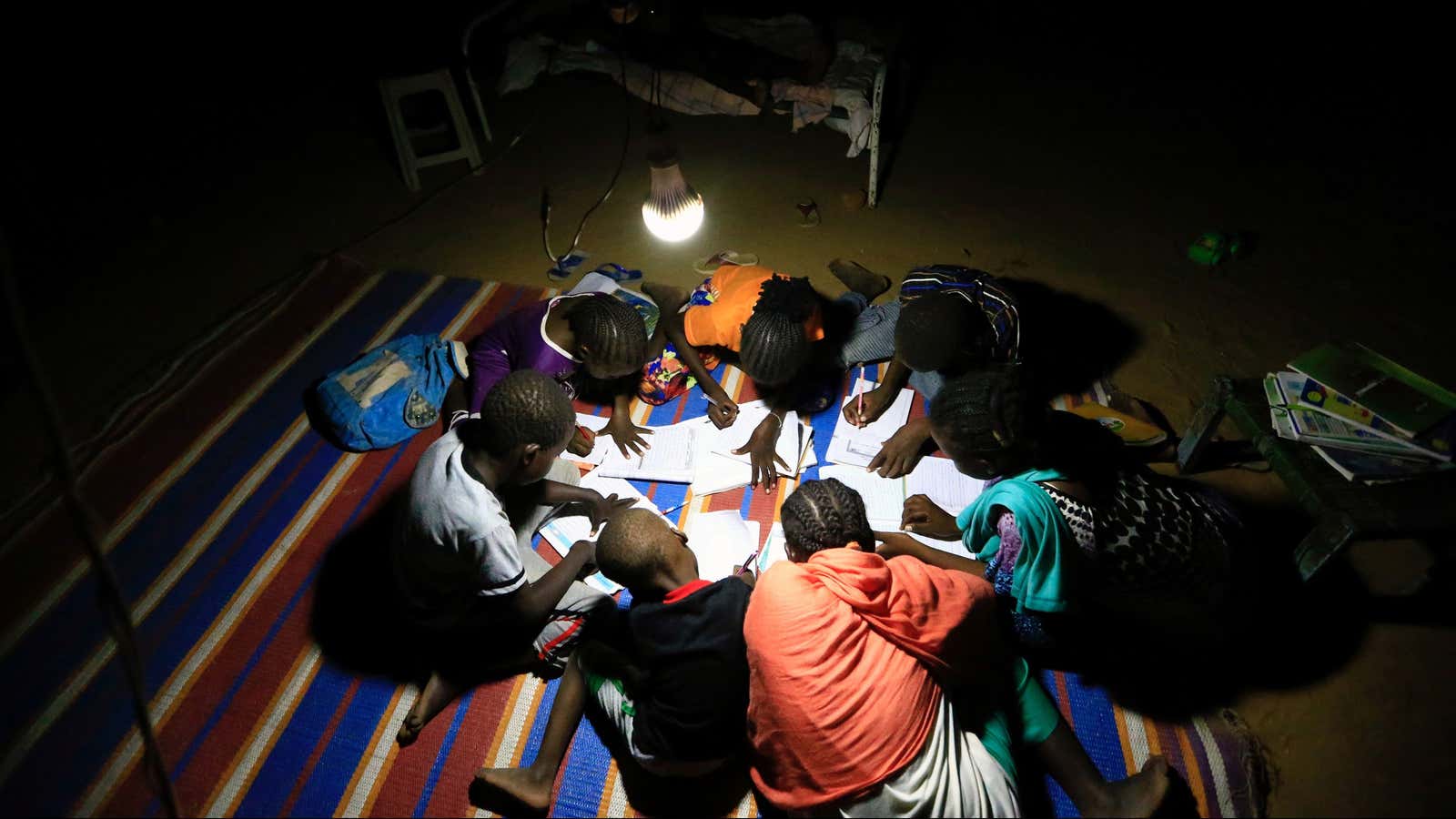Around 600 million people lacked access to electricity in Africa, according to World Bank data from 2014.
If you have read an article about electricity in Africa before, this number is not new to you. It has become a familiar, almost totemic refrain in every op-ed, panel discussion and program launch addressing electrification on the continent. The statistic is so frequently cited that it can sometimes wash over its audience like a repeated cliché.
Several days ago, the World Bank quietly updated the statistic based on 2016 data. This update provides us with a space to appreciate, again, the heavy and urgent burden of human consequence this statistic represents. It should imbue us all with a renewed sense of urgency.
But some 600 million people still lack access to electricity in Africa, according to World Bank 2016 data. In other words, no absolute progress has been made since 2014.
Over the two years from 2014 to 2016, the off-grid population has gone down slightly. In fact, electricity has reached an impressive additional 76 million people and the electrification rate increased by 5 percentage points to 43%. But, these 76 million new connections only slightly outpaced population growth of 54.5 million people. So the absolute number of people living without electricity has fallen by only 21 million and the headline statistic remains basically steady at a rounded 600 million people.
There are some encouraging signs. 60% of the newly connected population were in rural areas, where people are more difficult to connect. The urban electrification rate moved slightly from 72% to 74% while rural electrification increased from 16% to 23% in the same time frame. So, progress is being made in the more difficult task of rural electrification. But it’s not enough.
What does this all mean?
The electrification sector has not been standing still. Pay-as-you-go solar has attracted $750 million in investment over the past five years, mini-grids are gaining traction with hefty donor funding allocated across the continent (our estimate is over $600 million) and public sector electrification efforts by national governments are intensifying.
But, this update confirms again that universal electrification is hard and expensive. Grid connections cost anywhere between $250 and $2500+ depending on proximity to the grid. Mini-grids that offer a grid-like service still cost between $500 and $1500 to connect each household. Electrification in a continent where over 60% of the population still live in rural areas is even harder.
So our message isn’t one of discouragement. Instead, we’d propose that we use this update to look with fresh eyes at this staggering statistic; 600m people in Africa lack electricity. We must renew our appreciation for the scale of the challenge and the human consequences of failure.
Universal electrification is the seventh of the Sustainable Development Goals that the global community has committed to achieve by 2030. Even on very optimistic assumptions about the current connection trajectory, 240 million people in Africa will still lack electricity in 2030. To reach our goal, governments, donors and investors need to rally anew behind both government electrification efforts and private sector players in the utility, mini-grid and solar home system sectors
